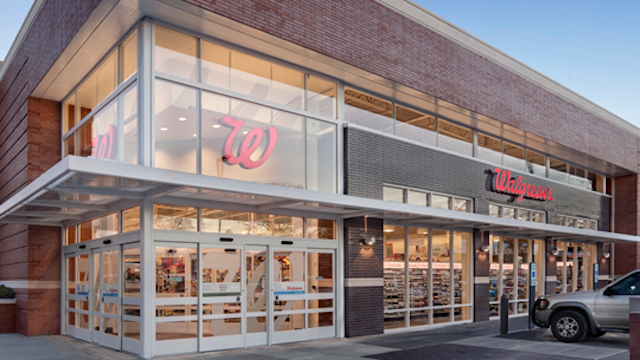After a period of soft performance, Walgreens sales rose by 2.1 per cent in the latest quarter, representing a marked improvement. Meanwhile, on the bottom line, net income grew by a robust 5.8 per cent.
At the same time the company has announced it is dropping its merger bid with rival Rite Aid and will instead attempt to gain Federal Trade Commission approval to buy about 2200 Rite Aid stores for around US$5.2 billion.
Although the general trajectory looks better, Walgreens’ overall results remain patchy. The US pharmacy division drove all of the sales growth, while the impact of exchange rates meant that the turnover in international pharmacy shrunk by 10.3 per cent.
Net income expansion was also the result of lower tax provision rather than a consequence of better operating profit. Indeed, operating income declined by 1 per cent on a year-on-year basis. To be fair, the operating result would have been far worse were it not for Walgreens’ cost discipline and its ability to extract continued savings by streamlining its business.
In short, the numbers paint a picture of a firm that while perfectly stable, is finding it hard to generate stellar growth because of circumstances, like the currency situation, which are largely outside of its control.
This is one of the reasons why Walgreens has been so keen to finalise the Rite Aid merger – it knew this would provide an immediate boost to the top-line and longer-term benefits to both sales and profits as it makes improvements and finds synergistic savings.
With the full merger now firmly off the table, Walgreens is pinning its hopes that a new agreement to acquire around half of Rite Aid’s store estate and some distribution assets will be quickly approved.
Away from deal making, the stand-out performance this quarter came from the US pharmacy segment where sales increased by 6.3 per cent. This is flattered by the alliance between Walgreens and Prime Therapeutics, which was finalised in April. The new AllianceRx Walgreens Prime division has boosted prescription volumes and will continue to aid growth for at least the remainder of this fiscal. Again, however, this demonstrates that the business is now reliant on new deals and partnerships to provide growth that the underlying business is unable to generate.
Although pharmacy received a boost, the same can’t be said of the front of store retail division. Here sales dipped by 1.8 per cent on a total basis, and by 0.4 per cent in comparable terms. Some of this is the result of discontinued e-commerce operations – but it still shows that the retail part of Walgreens’ business is not firing on all cylinders.
The biggest problem areas are in basic personal care and household essentials. Here, Walgreens fails to do two things: first, to encourage visitors to stores to browse and pick up everyday items; second, to remain foremost in mind for shoppers needing to buy such items. There is much more work to do on optimising stores to encourage the former, and a bit more work to do on changing mindsets to drive the latter. The problems on general merchandise continue to be offset by a better performance in beauty and health.
Looking ahead, Walgreens’ numbers should trend better, largely thanks to the AllianceRx Walgreens Prime contribution. Underlying numbers should also improve as they come up against weaker comparatives.
However, it is the new Rite Aid deal that will truly transform performance – and that is now in the hands of the FTC.
The Rite Aid deal in focus
Meanwhile, the news that Walgreens is to scrap its $9.4 billion merger with Rite Aid is unsurprising. The glacial pace of the Federal Trade Commission investigation and increasing signals that the federal government would disallow the merger have forced a rethink.
In some ways, the process so far has been a colossal waste of resources and effort. Walgreens has to pay out a $325 million termination fee to Rite Aid, and all parties – including Fred’s, which was due to acquire some Rite Aid stores – have invested time and money with very little to show for it.
When it comes to retail matters, the FTC is both inefficient and ineffective. Its previous decisions, such as the instance that Dollar Tree disposes of Family Dollar stores during acquisition, and that Albertsons-Safeway sells off stores during their merger, have resulted in failure. In both cases, the spin-offs, designed to provide more choice to consumers, went bankrupt and ended up back in the hands of larger players. For us, this underscores the government’s complete lack of understanding of how the retail market works in practice – something we believe was at play in the case of Walgreens.
Fortunately, Walgreens and Rite Aid have taken a pragmatic approach and replaced the merger with a deal under which Walgreens will buy 2186 Rite Aid stores, related distribution assets, and some inventory for $5.175 billion. While this will still be subject to FTC scrutiny, it will, at least in theory, be easier to gain approval because it avoids the dilution of store competition in some markets and leaves Rite Aid as a viable player in the pharmacy space.
For Rite Aid, the deal is a good one. The proceeds of Walgreens’ payment will allow it to reduce debt and restore its balance sheet to health. The company’s first-quarter results, which were also released today, show the imperative of doing this: the $109 million interest payment dragged it down to a net loss of $75.3 million – an unsustainable position.
The question, of course, is how Rite Aid will survive as a smaller entity. After the deal, the group will have 2337 stores – around half the number it has now. This will be punishing on economies of scale, especially for a company that is already struggling to turn a profit even before interest payments are taken into account. The answer lies in the agreement with Walgreens, which will allow Rite Aid to become a member of Walgreens Boots Alliance’s group purchasing organisation. This will be highly beneficial and will allow Rite Aid to improve pharmacy margins drastically.
For Walgreens, the deal allows it to boost both the top and bottom lines at a time when growth is harder to come by. There will be some near-term benefits, but most of the synergistic savings and improved turnover will accrue over a period of three years. The costs of converting stores to the Walgreens format should, by and large, be neutral thanks to the improved margins Walgreens brings, and the uplift in sales from the stronger brand and improved store format.
While the deal is not the deal of choice for either Walgreens or Rite Aid, it is a good compromise that brings benefits to both parties. Ironically, it is also one that means Rite Aid will effectively become a part of Walgreens network, albeit with a degree of operational and managerial independence. Of course, all of this remains subject to approval and all eyes now turn to the FTC for its decision on this latest move.
Neil Saunders is MD of GlobalData Retail.






